|
The
second
program
in
the
new
era
of
San
Francisco
Ballet
under
its
new
artistic
director
Tamara
Rojo
was
as
arresting
as
the
first
(reviewed
last
month). British Icons was a reminder that Rojo, a top-notch ballerina in her time, had joined the Royal Ballet London in order to experience the work of two major British choreographers of the last century: Sir Frederick Ashton (1904-1988), who established the “English style” at the Royal Ballet, and psychological storyteller Sir Kenneth MacMillan (1929-1992), also at the Royal.
Tamara Rojo danced the title role in Ashton’s Marguerite and Armand and was the first to dance the lead in the 2013 revival of MacMillan’s masterpiece Das Lied von der Erde, Song of the Earth,
set
to
Gustav
Mahler’s
symphonic
song
cycle.
She
promoted
the
piece
and
now
brought
both
ballets
to
the
dancers
of
her
new
company.
Song of the Earth
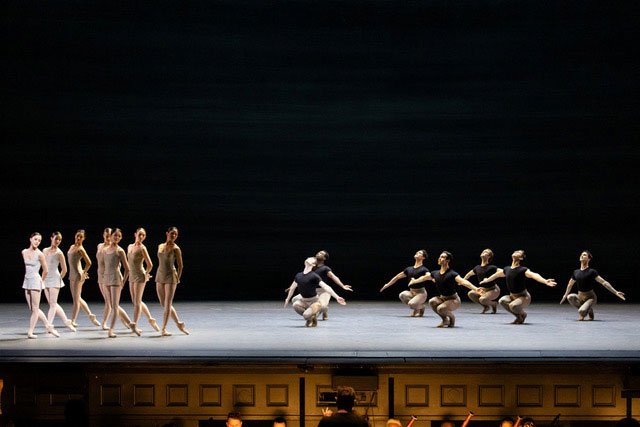
Ancient Chinese poetry translated into German songs for a German
composer, chosen by a British choreographer: one could call it a cross
-cultural enterprise for a company whose contingent of principal dancers is
50% Asian and Latino. The two singers of Mahler’s Das Lied von der Erde
/ Song of the Earth, mezzo soprano Nicola Printz and tenor Thomas Kinch,
appeared discreetly at the edge of the stage for their alternate songs (six
altogether). The orchestra under Martin West and both singers delivered a
subtle performance without any bombast. The ballet follows the cycle in six
scenes, set in utter simplicity in the huge empty space of the stage. The
dancers wear practice tunics and leotards – perfect attire for the simplest
topic on earth: life and death.
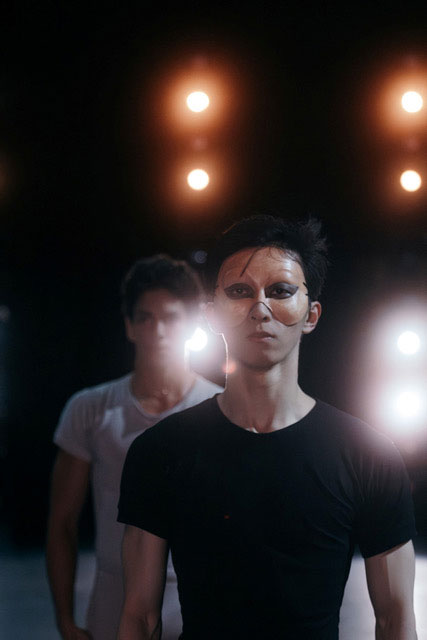
MacMillan carried the idea throughout the 50s, but got repeatedly rebuffed
by the Royal Opera: Mahler’s song cycle was considered untouchable, too
elevated for a ballet treatment. He finally turned to Germany, where John
Cranko at the Stuttgart Ballet gave him his top stars to create the piece in
1963. MacMillan considered Song of the Earth his finest work although it
is not a story ballet – it’s an almost abstract meditation. The choreographer
described it as “A woman, a man, and a messenger of death.”
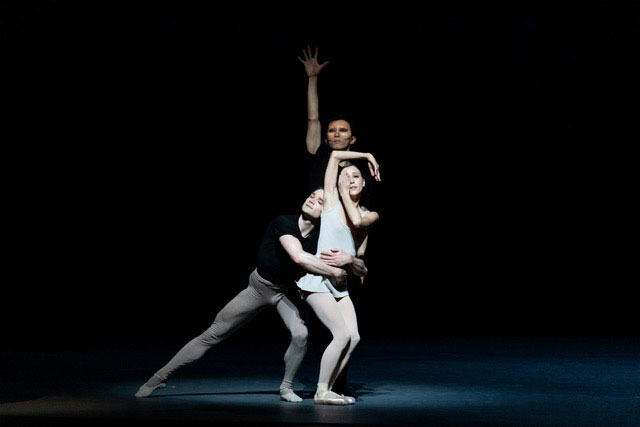
The most striking feature is that MacMillan created something akin to a
new language for his piece: a stripped-down version of the classical canon,
with interesting parallels to Balanchine’s neo-classical reinvention of ballet
from that era. The barest essentials, which are the most beautiful and the
most difficult to execute, dominate: tendus, low legs (in occasional fan
symmetries), simple pirouettes and small leaps for the men; for the
women, single turns landed on pointe, and bourrées – little runs backward
and forward on pointe. Modern dance elements add spice and a note of
humor with flexed feet, inward-turned knees and rounded backs. The
women stalk around like gazelles or as if sprung from Proust’s Young Girls
in Flower. With interlaced arms they form delicate patterns of threes and
fours. The most charming element are unusual arm and hand positions,
gently flexed wrists or crossed hands held in repose, arms raised tenderly
to protect eyes from seeing.
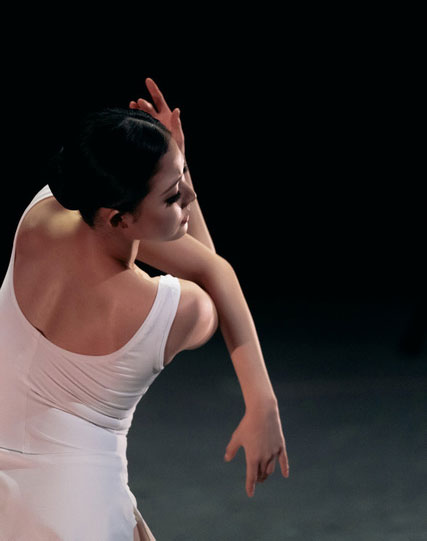
The central figure of the woman, compellingly danced by Principal Wona
Park, is doubled up by her younger, playful incarnations: Principals
Jasmine Jimison and soloist Katherine Barkman, following the song cycle
about youthful folly, longing, and loss. The last two songs on solitude and
death focus on “the woman, the man, the messenger.” Both male
protagonists–Isaac Hernandez as the Man and Wei Wang as the
Messenger–wear half-masks, perhaps to denote their symbolic,
exchangeable character in the woman’s evolution.
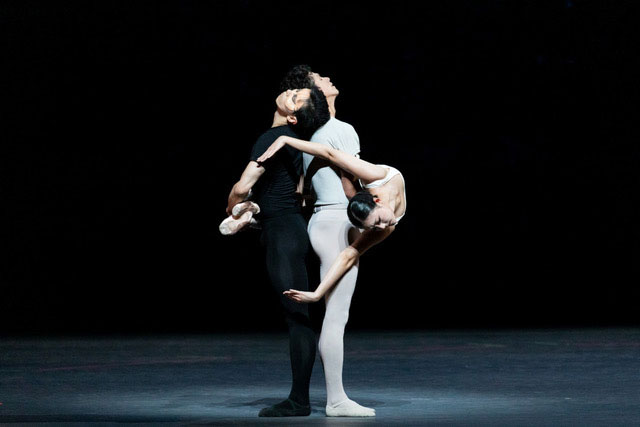
The Messenger of death, Wei Wang (once again in excellent form) dances
among the others like any man or lover. He is like the presence of a
thought, an inevitable fact, a possibility. There are many moments of
faltering, succumbing, expiring through his encounters with the group. The
halting rhythms of melancholy and mourning in the last two songs are
danced with halting moves that seem caught in the suspense of breath –
the moment of stillness between breathing in and breathing out.
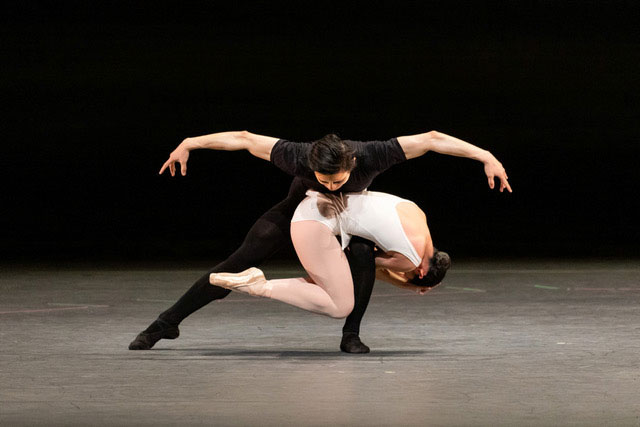
The piece culminates in an extended pas de trois. Death leads, embraces,
envelops the lovers in a tender, strangely consoling way. The three dancers
form a lyrical trio of desire, love an sorrow. As the music begins to fade
into Mahler’s final accords, the three are lined up at the back of the stage in
a row and move forward in a magically simple step: each deep plié rises
into a simple tendu relevé and descends again. Almost touching hands,
they advance toward the audience in slow-motion as if in suspense, while
the last words, “ewig… ewig…” (forever) sound the mystery of fate.
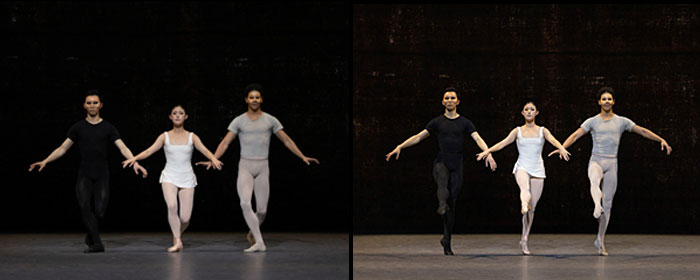
SF Ballet is lucky to add such a masterful piece to the repertoire, and to
have the technical and stylistic capacity for a brilliant execution. In 2019,
the company performed a work of striking similarity in spiritual purpose
and theme: Liam Scarlett’s small gem, Toteninsel (Isle of Death) set to
Rachmaninov. Scarlett’s choreography carried the same sublime message
of beauty beyond death. (Reviewed in these pages.)
Marguerite and Armand

Sir Frederick Ashton’s 35-minute Marguerite and Armand is
unfortunately far from a masterpiece. It’s a bit like an overblown birthday
cake and thus very much a question of taste. But it was moving and
enganging for different reasons: the performance on Valentine’s Day was
the last curtain call for SF Ballet’s prima ballerina assoluta
Yuan Yuan Tan.
Tan, who turned 48 that day, can still look like 25 onstage. Her
engagement by artistic director Helgi Tomasson made her one of the first
Asian principals in the US. The Shanghai dancer became not only an
extraordinary artist but also a charming international ambassador for
ballet. Having been championed throughout her career by Tomasson, his
retirement last fall also led to hers.
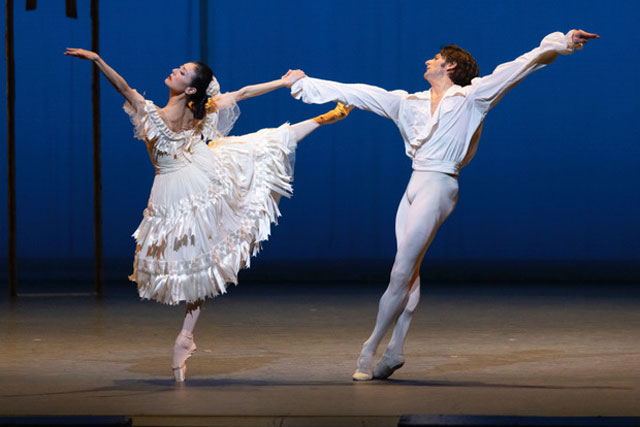
In Marguerite and Armand, Tan takes the role of Marguerite Gautier from La Dame aux camélias, the 1848 play by Alexandre Dumas that became
Verdi’s opera La Traviata. Ashton did not bother with the whole story of
the courtesan dying from consumption and thwarted love. He created a
kind of “Readers’ Digest” of the story: Marguerite and her young admirer
Armand fall in love: scene 1 pas de deux. They spend a happy summer in
the countryside: scene 2 pas de deux. Armand’s father intervenes and
makes her renounce his son: scene 3 separation pas de deux. She returns
to her Paris protector and at the first ball Armand expresses his rage: scene
4 humiliation pas de deux. She is dying when the repenting father and son
return: scene 5 death pas de deux.
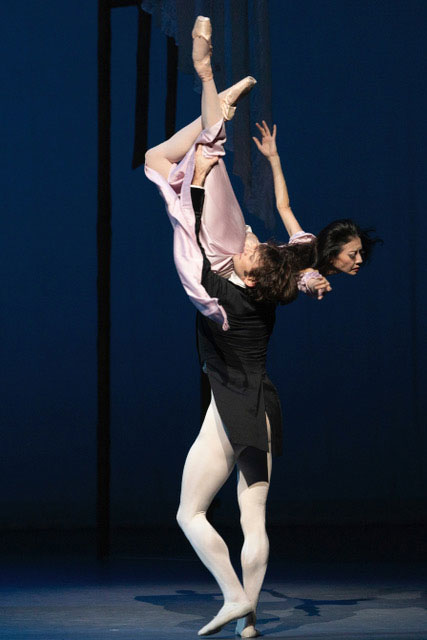
The impression is that Ashton rushed to deliver a romance for the
superstars of the moment (1963): Margot Fonteyn and Rudolf Nureyev,
who had recently defected to the West. The choreographer picked a story
everyone could relate to as familiar and popular. (La Traviata is one of the
most-performed operas in the repertoire, year after year.) He used Liszt’s
Piano Sonata in B-minor which tends to overpower the dance. He let Cecil
Beaton over-dress the ballerina in tulle and frills that bury her line. The
choreographer who showed such delightful humor and precise observation
in his iconic ballet La fille mal gardée (The Wayward Girl) from 1960, did
not manage to raise Marguerite and Armand beyond conventional
sentiment and clichés.
Yuan Yuan Tan showed her lovely Asian restraint in the role. No empty
smiles, no mincing; she expressed a subtle underlying acceptance of pain.
Her exquisite pliability and musicality helped to take the generic role as far
as it could be taken. Her partner, Principal Aaron Robison, was a fine
Armand who kept something like a modern reserve instead of trying to fire
up his arabesques of yearning the way Nureyev did.

The truly moving part came afterwards, when Tan stood alone onstage
receiving the roaring accolades of the SF audience. She has been the most
admired and adored ballerina of the company for almost 29 years, and
people just couldn’t let her go. It was as if everyone knew there is nobody
in sight capable to step into her shoes. She was showered with roses that
kept flying up from the orchestra and then from the entire company
gathered behind her. Tamara Rojo and Helgi Tomasson handed her
bouquets, and the unflappable humility and grace of Tan’s bows of
gratitude were memorable. Well, not entirely unflappable. There was,
perhaps, a secret tear. But also one sudden leap of joy at the audience’s
enthusiasm – one of these impossible back-bending, foot-over-head jumps
performed without any preparation. Maybe there was an irresistible bit of
relief to be ending this long chapter and flying off to new artistic
adventures – internationally and back in Shanghai. The audience finally
relented, after innumerable curtain calls, and left looking elated, sad,
bereft.
|